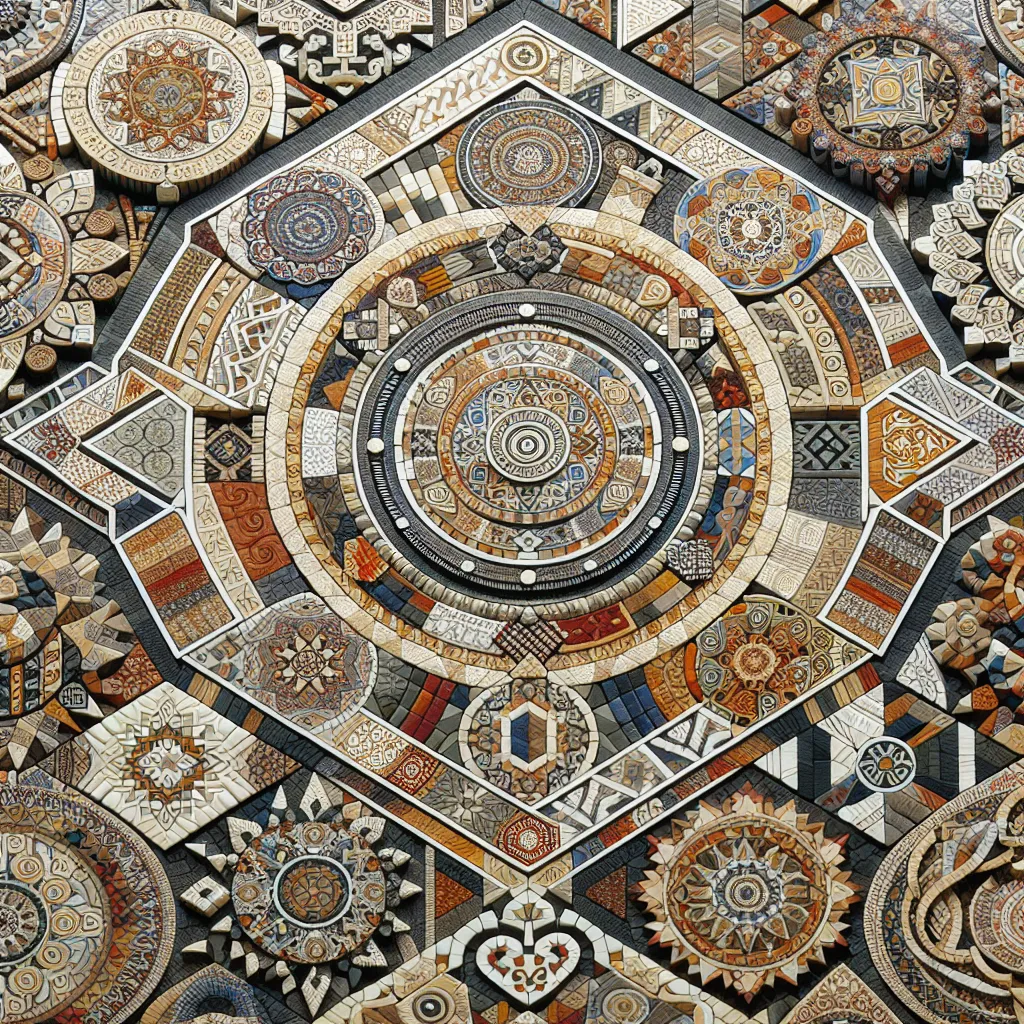Origins of Ornamentation in Art and Design
Ornamentation in art and design has a rich and diverse history that dates back to the earliest human civilizations. The origins of ornamentation can be traced to the prehistoric era, where ancient cultures adorned their tools, pottery, and cave walls with intricate patterns and symbols. These early forms of ornamentation served both aesthetic and functional purposes, often depicting elements of the natural world and spiritual beliefs.
As human societies evolved, so did the techniques and styles of ornamentation. In ancient Egypt, ornate hieroglyphics and intricate motifs adorned temples, tombs, and everyday objects, reflecting the importance of symbolism and storytelling in Egyptian culture. Similarly, the Greek and Roman civilizations incorporated ornamental details into their architecture, pottery, and jewelry, drawing inspiration from mythology, nature, and geometry.
Throughout history, ornamentation in art and design has been influenced by cultural exchange, migration, and trade routes. The Islamic world developed a distinctive ornamental style characterized by geometric patterns, arabesques, and calligraphy, which found its way into diverse regions through the expansion of the Islamic empire. Meanwhile, Asian ornamentation, such as the delicate motifs of Chinese porcelain and the intricate designs of Japanese textiles, reflected the unique aesthetics and craftsmanship of each culture.
The European Middle Ages witnessed the flourishing of ornamental art in the form of illuminated manuscripts, stained glass windows, and decorative metalwork, often embellished with religious iconography and symbolism. The Renaissance period saw a revival of classical motifs and a renewed interest in perspective and anatomy, influencing the ornamentation of paintings, sculptures, and architectural elements.
As global exploration and colonization expanded, ornamentation in art and design underwent further cross-cultural fertilization. The Baroque and Rococo styles of the 17th and 18th centuries embraced lavish ornamentation, characterized by elaborate ornamented surfaces, asymmetrical forms, and intricate detailing in architecture, furniture, and fashion.
Today, the legacy of ornamentation in art and design continues to inspire contemporary creatives, from architects and interior designers to fashion designers and digital artists. The origins of ornamentation remain embedded in our cultural heritage, offering a rich tapestry of motifs, symbols, and techniques for artists and designers to draw upon in their creative endeavors.
Evolution of Ornamentation Techniques
Throughout history, the evolution of ornamentation techniques has played a crucial role in the development of art and design. The use of ornamentation dates back to ancient civilizations, where it was employed to embellish everyday objects, architecture, and textiles. In early human history, ornamentation was primarily created using simple techniques such as carving, painting, and weaving.
As civilizations progressed, so did the techniques of ornamentation. The Ancient Greeks, for example, utilized intricate patterns in their architecture, pottery, and sculptures, often incorporating motifs inspired by nature, mythology, and geometry. Similarly, in the Far East, techniques such as intricate woodcarving, delicate ceramics, and elaborate textile designs became prominent forms of ornamentation.
The Middle Ages witnessed the rise of ornamental techniques such as stained glass windows, elaborate manuscript illuminations, and detailed metalwork. These techniques not only served a decorative purpose but also held symbolic and religious significance. The Renaissance period brought about a revival of classical ornamentation, with artists and designers drawing inspiration from ancient Roman and Greek art.
During the Industrial Revolution, advances in technology and manufacturing processes revolutionized ornamentation techniques. Mass production allowed for intricate designs to be replicated with greater ease, leading to the widespread use of ornamental elements in everyday objects and architecture. The Arts and Crafts movement, in response to the industrialization of the 19th century, sought to revive traditional craftsmanship and promote unique, handcrafted ornamentation.
In the modern era, ornamentation techniques have continued to evolve with the advent of new materials, technologies, and artistic movements. From the ornate Art Nouveau designs of the late 19th century to the sleek and minimalist ornamentation of the 21st century, artists and designers have continuously pushed the boundaries of traditional ornamentation, embracing new forms of expression and innovation.
In conclusion, the evolution of ornamentation techniques reflects the changing aesthetics, technologies, and cultural influences of different time periods. From ancient civilizations to the present day, the use of ornamentation in art and design continues to be a rich and dynamic aspect of human creativity.
Cultural Significance of Ornamentation
Ornamentation has played a significant role in the cultural and artistic history of societies around the world. From ancient civilizations to modern-day design, the use of ornamentation has reflected the values, beliefs, and customs of different cultures. In the realm of art and design, ornamentation serves as a visual language that communicates the unique cultural identity of a given society. Across various periods of art history, ornamentation has been utilized to symbolize social status, religious beliefs, and aesthetic preferences, thereby becoming an integral part of cultural expression.
Throughout history, different cultures have developed distinct ornamentation styles, incorporating motifs and patterns that are emblematic of their heritage. For example, the intricate geometrical designs of Islamic art, the elaborate floral motifs of Rococo ornamentation in Europe, or the vibrant colors and patterns of traditional African textiles all serve as visual manifestations of their respective cultural traditions. The use of ornamentation in art and design not only reflects cultural values but also preserves and perpetuates these values for future generations.
Moreover, ornamentation often holds symbolic significance within a cultural context. In many traditional societies, specific ornamental elements are imbued with meanings related to spirituality, mythology, or folklore. These symbols enrich the visual landscape of art and design while simultaneously conveying deeper cultural narratives. Therefore, the incorporation of ornamentation in various art forms becomes a means of preserving and transmitting cultural heritage, fostering a sense of continuity and belonging within a community.
In contemporary art and design, the appreciation of ornamentation as a cultural signifier has led to the revitalization and reinterpretation of traditional ornamentation styles. Artists and designers are drawing inspiration from diverse cultural sources, infusing their work with ornamentation that pays homage to the rich tapestry of global heritage. This cross-cultural exchange not only celebrates diversity but also prompts meaningful dialogues about the interconnectedness of different cultural traditions.
As we continue to explore the history of ornamentation in art and design, it becomes evident that its cultural significance surpasses mere embellishment; it serves as a testament to the profound connections between creativity, identity, and heritage across the world.
Contemporary Trends in Ornamentation
Contemporary trends in ornamentation encompass a wide range of influences and styles, reflecting the diversity and innovation characterizing modern art and design. In the 21st century, ornamentation has evolved to embrace a fusion of traditional motifs with cutting-edge techniques, resulting in a dynamic and multifaceted aesthetic. Designers and artists are increasingly drawing inspiration from global cultures, nature, and technology, reimagining ornamentation in fresh and unexpected ways.
One prevailing trend is the convergence of traditional ornamentation with contemporary minimalism, yielding a refined and understated aesthetic. This approach often involves the use of clean lines, geometric shapes, and subtle embellishments, infusing spaces and objects with a sense of sophistication and simplicity. Moreover, there has been a resurgence of interest in organic and floral motifs, with artists and designers exploring new interpretations of botanical-inspired ornamentation. This ongoing dialogue with nature gives rise to ethereal and captivating designs that blur the boundaries between art and the natural world.
Another prominent development is the integration of digital technology and ornamentation, resulting in a new wave of innovative and interactive designs. Digital ornamentation encompasses a wide array of techniques, from intricate digital patterns to interactive installations that engage the viewer in a multisensory experience. This fusion of technology and ornamentation opens up exciting possibilities for creating immersive environments that captivate and inspire.
Furthermore, ornamentation in contemporary art and design often serves as a conduit for cultural exchange, as creators draw from a rich tapestry of global traditions and craftsmanship. This cross-pollination of cultural influences has led to the revitalization of age-old techniques and the emergence of hybrid styles that celebrate diversity and inclusivity. By infusing their work with elements from different cultures, artists and designers contribute to a vibrant and interconnected global visual language.
In conclusion, contemporary trends in ornamentation reflect a dynamic interplay between tradition and innovation, cultural exchange, and technological advancement. As the boundaries of art and design continue to expand, ornamentation serves as a compelling medium through which creators express their visions and connect with audiences on a global scale.

